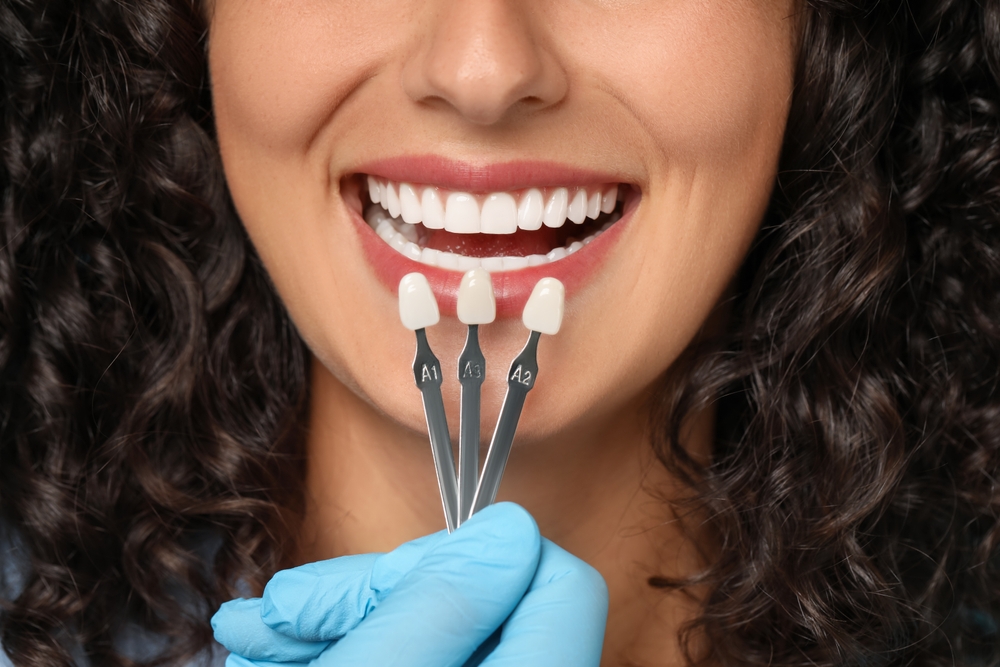Many people dream of having a perfect smile, and cosmetic dentistry has made that dream more achievable than ever. However, understanding the scope and cosmetic dentistry limitations is crucial before you commit to any treatment plan.
Cosmetic dentistry focuses on improving the appearance of your teeth, gums, and overall smile. While these procedures can create dramatic transformations, they work best when your oral health foundation is already solid. Knowing what cosmetic dentistry can and cannot address will help you set realistic expectations and make informed decisions about your dental care.
What Cosmetic Dentistry Can Successfully Fix
Tooth Stains and Discoloration
Professional teeth whitening remains one of the most popular cosmetic dental procedures. Whether your teeth are stained from coffee, wine, tobacco, or simply aging, cosmetic dentistry offers several whitening options. Professional treatments can lighten teeth by several shades, providing results that are both dramatic and long-lasting compared to over-the-counter products.
Chips and Minor Tooth Damage
Small chips, cracks, and minor breaks in your teeth can be effectively repaired with cosmetic bonding or porcelain veneers. These treatments not only restore the appearance of damaged teeth but also protect them from further deterioration. The results look natural and can last for many years with proper care.
Gaps Between Teeth
Spaces between teeth can be closed using various cosmetic techniques. For smaller gaps, dental bonding or veneers can create the appearance of properly spaced teeth. Larger gaps might benefit from orthodontic treatment followed by cosmetic enhancements to achieve the desired aesthetic result.
Mild Misalignment Issues
While cosmetic dentistry isn’t a substitute for comprehensive orthodontic treatment, it can address minor alignment issues. Porcelain veneers can make slightly crooked or uneven teeth appear straighter and more uniform. This approach works particularly well for teeth that are minimally misaligned or have minor rotation issues.
Worn or Shortened Teeth
Teeth that have been worn down due to grinding, acid erosion, or natural aging can be restored to their original length and shape. Crowns, veneers, or bonding can rebuild the tooth structure and create a more youthful, vibrant smile.
Understanding Cosmetic Dentistry Limitations
Severe Tooth Decay
Cosmetic procedures cannot fix teeth with extensive decay or cavities. These underlying health issues must be addressed first through restorative dentistry. Attempting to place veneers or perform whitening on severely decayed teeth can lead to complications and treatment failure.
Active Gum Disease
Gum disease creates an unstable foundation for cosmetic work. Inflamed, infected, or receding gums need treatment before any cosmetic procedures can be safely performed. Healthy gums are essential for the success and longevity of cosmetic dental work.
Significant Structural Damage
Teeth that are severely broken, cracked, or damaged may require restorative treatment rather than purely cosmetic solutions. In some cases, root canal therapy, extensive rebuilding, or even tooth replacement might be necessary before cosmetic enhancements can be considered.
Major Bite Problems
Serious orthodontic issues, including significant overbites, underbites, or severely crooked teeth, typically require comprehensive orthodontic treatment. While cosmetic dentistry can improve the appearance of these conditions to some degree, it cannot address the underlying functional problems that may exist.
Unrealistic Aesthetic Goals
Cosmetic dentistry works with your existing tooth structure and facial features. While dramatic improvements are possible, the results must complement your natural appearance and maintain proper function. Some patients may have expectations that exceed what is safely and aesthetically achievable.
The Importance of Professional Consultation
Setting proper expectations begins with a thorough consultation with a qualified cosmetic dentist. During this appointment, your dentist will evaluate your oral health, discuss your aesthetic goals, and explain what treatments can realistically achieve for your specific situation.
This consultation process serves several important purposes. First, it identifies any underlying dental health issues that need attention before cosmetic work can begin. Second, it allows your dentist to create a treatment plan that addresses your concerns while maintaining optimal oral health. Finally, it ensures you understand both the potential benefits and limitations of your chosen treatments.
A skilled cosmetic dentist will also use digital imaging or other visualization tools to help you see potential results before treatment begins. This technology helps bridge the gap between expectation and reality, reducing the likelihood of disappointment with final results.
Making Informed Decisions About Your Smile
Cosmetic dentistry can create remarkable improvements in your smile’s appearance, but success depends on realistic expectations and proper treatment planning. The best outcomes occur when cosmetic procedures are performed on a foundation of excellent oral health.
Before pursuing any cosmetic dental treatment, ensure your teeth and gums are healthy, understand the limitations of your chosen procedures, and work with a dentist who prioritizes both aesthetics and long-term oral health. With the right approach, cosmetic dentistry can help you achieve the confident, beautiful smile you’ve always wanted.
At Aesthetic Dentistry, we believe in a comprehensive approach to cosmetic dentistry, focusing on both the appearance and function of your smile. Our team is dedicated to providing the highest quality care and achieving outstanding results for our patients. Contact us today to learn more about our services and schedule a consultation.

